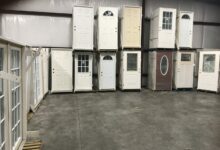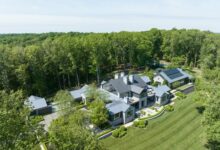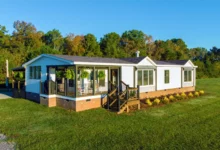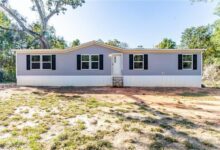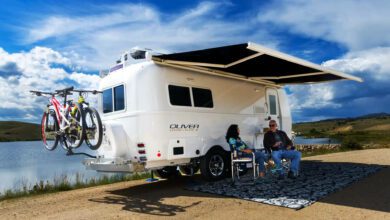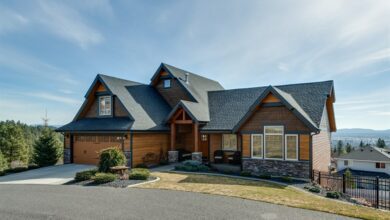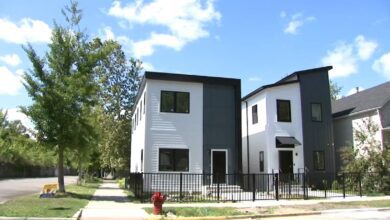Prefab Homes for Sale in Minnesota: Guide for Homebuyers
Prefab Homes for Sale Minnesota – Are you considering purchasing a prefab home in Minnesota? Look no further! In this comprehensive guide, we will walk you through everything you need to know about prefab homes for sale in the Land of 10,000 Lakes. From understanding the different types of prefab homes to financing options and finding the perfect location, we’ve got you covered. So, grab a cup of coffee and let’s dive in!
Understanding Prefab Homes
When it comes to prefab homes, there are various types and styles to choose from. One popular option is the modular home. These homes are built in sections or modules off-site in a factory-controlled environment. Once complete, the modules are transported to the desired location and assembled on a foundation. This construction method allows for a faster and more efficient building process.
Another type of prefab home is the panelized home. With this construction method, the walls and roof panels are built in a factory and then transported to the site for assembly. Panelized homes offer flexibility in design and can be customized to fit the homeowner’s preferences. They also tend to have better insulation and energy efficiency compared to traditional stick-built homes.
A third type of prefab home is the manufactured home, which is built entirely in a factory and transported to the site on its own wheels. These homes adhere to a strict set of federal construction standards and are subject to regular inspections. Manufactured homes are an affordable housing option and come in a variety of sizes and layouts.
The Benefits of Prefab Homes
There are numerous advantages to choosing a prefab home in Minnesota. One of the main benefits is cost savings. Prefab homes are often more affordable than traditional stick-built homes due to the streamlined construction process and materials used. Additionally, prefab homes are known for their energy efficiency, which can result in lower utility bills for homeowners.
Another advantage of prefab homes is the shorter construction time. Since the majority of the building process takes place in a factory setting, there are fewer delays due to weather conditions or other external factors. This means that homeowners can move into their new prefab home faster compared to a traditional stick-built home.
Prefab homes also offer design flexibility. Whether you prefer a modern, contemporary style or a more traditional aesthetic, there are prefab home options to suit your taste. Many manufacturers offer a wide range of customizable features, allowing homeowners to personalize their homes to their liking.
Top Prefab Home Manufacturers in Minnesota
When it comes to purchasing a prefab home in Minnesota, it’s important to choose a reputable manufacturer. Here are some of the top prefab home manufacturers in the state:
1. ABC Homes
ABC Homes is a leading prefab home manufacturer in Minnesota, known for their high-quality craftsmanship and attention to detail. They offer a wide range of customizable floor plans and design options to suit every homeowner’s needs. With their commitment to customer satisfaction, ABC Homes is a trusted choice for prefab homes in Minnesota.
2. XYZ Builders
XYZ Builders has been in the prefab home industry for over 20 years and has earned a reputation for their innovative designs and superior construction quality. They offer a variety of floor plans and customization options, ensuring that each homeowner can create their dream home. XYZ Builders is dedicated to providing exceptional customer service from start to finish.
3. DEF Homes
DEF Homes specializes in energy-efficient prefab homes in Minnesota. They utilize sustainable building practices and materials to ensure that their homes are not only environmentally friendly but also cost-effective for homeowners. DEF Homes offers a range of modern and contemporary designs, allowing homeowners to reduce their carbon footprint without compromising on style.
Financing Options for Prefab Homes
Financing a prefab home in Minnesota may differ from traditional home financing. It’s important to explore the various options available and find a financing solution that suits your needs. Here are some financing options to consider:
1. Construction Loans
If you plan to build a custom prefab home, a construction loan may be the best option for financing. These loans provide funding to cover the costs of construction, and once the home is complete, they can be converted into traditional mortgage loans. Construction loans typically have higher interest rates and require a larger down payment compared to traditional mortgages.
2. Mortgage Lenders Specializing in Prefab Homes
There are mortgage lenders who specialize in financing prefab homes. These lenders understand the unique aspects of prefab home construction and can offer tailored loan options. Working with a lender experienced in prefab home financing can simplify the process and ensure that you get the best terms and rates for your loan.
3. Traditional Mortgages
In some cases, traditional mortgage lenders may also offer financing for prefab homes. It’s important to research lenders and discuss your specific needs and requirements to determine if they provide loans for prefab homes. Be prepared to provide detailed information about the home and its construction process to secure a traditional mortgage.
Building Codes and Permits
Understanding building codes and permits is essential when purchasing a prefab home in Minnesota. Each county and municipality may have different regulations, so it’s important to familiarize yourself with the specific requirements for your desired location. Here are some key considerations:
Research Local Building Codes
Start by researching the local building codes for the area where you plan to place your prefab home. These codes dictate the minimum standards for construction, including structural, electrical, and plumbing requirements. It’s important to ensure that your prefab home meets or exceeds these codes to ensure safety and compliance.
Obtain the Necessary Permits
Before starting the construction or placement of your prefab home, you will need to obtain the necessary permits. These permits vary depending on the scope of work and location. Common permits include building permits, electrical permits, and plumbing permits. Working with a knowledgeable contractor or manufacturer can help streamline the permitting process.
Work with Professionals
When it comes to building codes and permits, it’s essential to work with professionals who understand the regulations and requirements. Hiring a licensed contractor or working closely with the prefab home manufacturer can ensure that all necessary permits are obtained and the construction process adheres to local building codes.
Finding the Perfect Location for Your Prefab Home
The location of your prefab home in Minnesota is crucial for your overall satisfaction and convenience. Here are some factors to consider when searching for the perfect location:
Neighborhood and Amenities
Consider the type of neighborhood and amenities that are important to you. Are you looking for a suburban setting with family-friendly amenities such as parks and schools? Or do you prefer a more urban environment with easy access to shops and restaurants? Researching different neighborhoods can help you find the ideal location for your prefab home.
School Districts
If you have children or plan to start a family, the quality of the school district is a crucial factor. Research the school districts in the areas you’re considering and evaluate their performance, extracurricular activities, and overall reputation. This will ensure that your children receive a quality education within the vicinity of your prefab home.
Proximity to Work and Transportation
Consider the proximity of your potential prefab home to your workplace or transportation options. Commute time and access to public transportation can greatly impact your daily routine and overall quality of life. Choosing a location that offers convenient access to your work and transportation options will save you time and stress in the long run.
Future Development Plans
Research any future development plans in the area where you plan to place your prefab home. This can include both residential and commercial developments. Understanding future growth and expansion can help you assess the long-term value and potential resale opportunities of your prefab home.
Customizing Your Prefab Home
One of the advantages of choosing a prefab home is the ability to customize it to your liking. Here are some ways you can personalize your prefab home in Minnesota:
1. Floor Plan Modifications
Most prefab home manufacturers offer a range of floor plans to choose from. However, these plans can often be modified to better suit your needs. Whether you need an extra bedroom or a larger kitchen, discuss your requirements with the manufacturer to see if they can accommodate your desired changes.
2. Exterior Finishes
From siding materials to paint colors, you can customize the exterior finishes of your prefab home. Consider your personal style and the overall aesthetic you want to achieve. Whether you prefer a modern, sleek look or a more traditional appearance, there are options available to make your prefab home reflect your taste.
3. Interior Design Choices
The interior design of your prefab home is another area where you can let your creativity shine. Choose finishes, fixtures, and appliances that align with your personal style and preferences. Work with the manufacturer or an interior designer to select the perfect flooring, cabinetry, countertops, and lighting options for your new home.
The Buying Process
The process of buying a prefab home in Minnesota involves several steps. Here’s a breakdown of the buying process:
1. Determine Your Budget
Start by determining your budget for purchasing a prefab home. Considerfactors such as your current financial situation, down payment amount, and monthly mortgage payment affordability. It’s important to have a clear understanding of your budget before proceeding with the buying process.
2. Research and Choose a Manufacturer
Research different prefab home manufacturers in Minnesota and compare their offerings, reputation, and customer reviews. Take into consideration factors such as design options, customization capabilities, and quality of construction. Choose a manufacturer that aligns with your preferences and budget.
3. Find a Reputable Real Estate Agent
Working with a real estate agent experienced in prefab home sales can make the buying process smoother and more efficient. They can help you navigate through the available listings, negotiate prices, and handle the necessary paperwork. Look for an agent who has knowledge of the prefab home market in Minnesota.
4. Explore Available Listings
Once you have chosen a manufacturer and enlisted the help of a real estate agent, start exploring the available prefab home listings in Minnesota. Take note of the location, features, and price of each listing. Visit open houses or schedule private showings to get a better sense of the homes that catch your interest.
5. Schedule Home Inspections
Before finalizing a purchase, it’s crucial to schedule home inspections to ensure that the prefab home is in good condition and meets all necessary standards. Hire a licensed home inspector to thoroughly assess the structural integrity, electrical systems, plumbing, and overall quality of the home. This step can help identify any potential issues or concerns.
6. Secure Financing
Once you have found your ideal prefab home, it’s time to secure financing. Contact lenders specializing in prefab home financing or traditional mortgage lenders to discuss your options. Provide them with the necessary documents, such as income verification and credit history, to start the loan application process. Compare rates and terms to find the best financing option for your needs.
7. Review and Sign the Purchase Agreement
Work with your real estate agent to review the purchase agreement carefully. Ensure that all agreed-upon terms, including the purchase price, financing details, and any contingencies, are accurately reflected in the contract. Seek legal advice if needed to fully understand the terms and obligations outlined in the agreement. Once you are satisfied, sign the purchase agreement.
8. Complete the Closing Process
During the closing process, various tasks need to be completed, including obtaining title insurance, completing the mortgage paperwork, and transferring ownership of the prefab home. Work closely with your real estate agent and lender to ensure that all necessary steps are taken. Be prepared to provide any additional documentation or information requested by the lender.
9. Receive the Keys and Move In
After all the paperwork has been completed and the necessary funds have been transferred, it’s time to receive the keys to your new prefab home in Minnesota. Coordinate with the seller and your real estate agent to schedule the final walkthrough and obtain the keys. Celebrate this exciting milestone and begin the process of moving into your new home.
Maintenance and Care
Maintaining and caring for your prefab home is essential for its longevity and continued enjoyment. Here are some tips for maintaining your prefab home:
1. Regular Cleaning and Inspection
Regularly clean and inspect your prefab home to identify any potential issues or maintenance needs. Clean the exterior, including the roof, siding, and windows, to prevent dirt buildup and potential damage. Inside, clean floors, surfaces, and appliances regularly to maintain cleanliness and functionality.
2. HVAC System Maintenance
Regularly maintain your HVAC (heating, ventilation, and air conditioning) system to ensure optimal performance and energy efficiency. Change air filters as recommended by the manufacturer, clean vents and ducts, and schedule professional maintenance checks to identify any issues or potential repairs.
3. Landscape and Yard Maintenance
If your prefab home has a yard or landscaping, maintain it regularly. Trim trees and bushes, mow the lawn, and address any weed or pest issues promptly. Regularly check irrigation systems and ensure that they are functioning properly.
4. Seasonal Maintenance Tasks
Perform seasonal maintenance tasks to protect your prefab home from weather-related damage. This may include cleaning gutters, inspecting the roof for any damage or leaks, sealing windows and doors, and preparing the exterior for extreme weather conditions.
5. Address Maintenance Issues Promptly
If you notice any maintenance issues or concerns, address them promptly to prevent further damage. This may include repairing leaks, fixing faulty electrical connections, or replacing worn-out components. Regular maintenance and timely repairs can help prolong the lifespan of your prefab home.
Frequently Asked Questions
Here are some commonly asked questions about prefab homes in Minnesota:
1. Are prefab homes more affordable than traditional stick-built homes?
Yes, prefab homes are often more affordable than traditional stick-built homes due to their streamlined construction process and cost-effective materials.
2. Can I customize the design of my prefab home?
Yes, prefab homes offer a range of customization options, allowing you to personalize the design and finishes to your liking. Discuss your preferences with the manufacturer to explore the available customization choices.
3. Are prefab homes energy-efficient?
Many prefab homes are designed with energy efficiency in mind. They often incorporate energy-efficient materials, insulation, and appliances, which can result in lower utility bills and reduced environmental impact.
4. Can I finance a prefab home with a traditional mortgage?
Yes, some traditional mortgage lenders offer financing options for prefab homes. It’s important to discuss your specific needs and the details of the prefab home with the lender to ensure eligibility.
5. How long does it take to build a prefab home?
The construction time of a prefab home can vary depending on factors such as the complexity of the design, the manufacturer’s production schedule, and weather conditions. However, prefab homes generally have a shorter construction time compared to traditional stick-built homes.
In conclusion, purchasing a prefab home in Minnesota offers numerous benefits, including cost savings, energy efficiency, and design flexibility. By understanding the different types of prefab homes, exploring financing options, and considering location and customization choices, you can find the perfect prefab home for your needs. Remember to maintain and care for your prefab home regularly to ensure its longevity and continued enjoyment. With this comprehensive guide, you are well-equipped to embark on your prefab home-buying journey in Minnesota. Happy house hunting!
